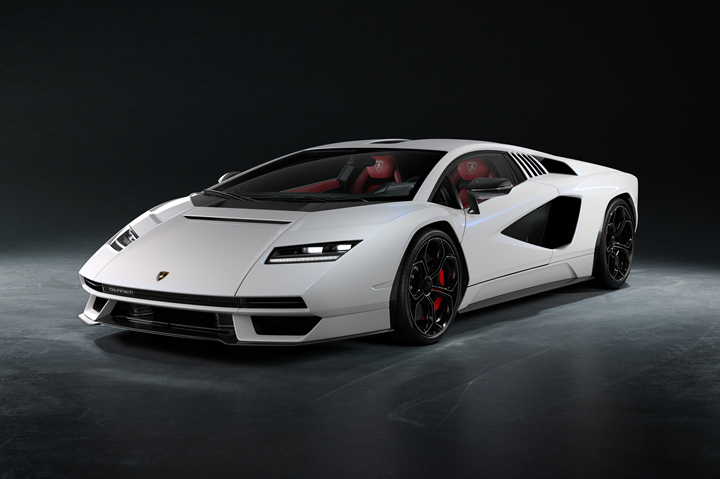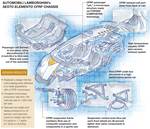Lambo goes retro with hybridized, carbon fiber-intensive LPI 800-4 supercar
The Italian specialist brings back the Countach in a limited-series vehicle featuring composite components such as a carbon fiber monocoque, exterior panels and brakes.

The Countach LPI 800-4 is a heritage model that gives a nod to its predecessors from 30+ years ago. It is also has a carbon fiber skin and structure. Photo Credit: Lamborghini
Ask any automotive designer about classic vehicle designs and you’re likely to hear “Lamborghini Countach,” a vehicle that rolled out of Sant’Agata Bolognese, Italy in 1974 and had iterations until 1990.
As the Italian builder of supersport cars transitions to an electric future, it is paying tribute to the Countach with the LPI 800-4, which has a hybridized 6.5-liter V12 with a system output of 802 horsepower (769 horsepower from the engine and 33.5 horsepower from the supercapacitor-driven e-motor).
And to make the four-wheel-drive car light (dry weight: 3,516 pounds) for high performance (0 to 62 miles per hour in 2.8 seconds), the engineers went carbon fiber intensive.
The LPI 800-4 features a carbon fiber monocoque with aluminum front and rear frames. All of the exterior body panels — hood, doors, quarter panels, etc. — are carbon fiber, with the exception of the roof, which is a photochromatic material that changes from solid to transparent with a pushbutton.
The front splitter, wind surrounds, side mirror caps, engine cover air intakes, rocker panels and rear splitter are also carbon fiber. Even the brakes are carbon fiber ceramic discs with aluminum calipers.
When the original Countach was developed, the internal project designation was LP 112. Lamborghini is building 112 of the LPI 800-4.
Related Content
-
TU Munich develops cuboidal conformable tanks using carbon fiber composites for increased hydrogen storage
Flat tank enabling standard platform for BEV and FCEV uses thermoplastic and thermoset composites, overwrapped skeleton design in pursuit of 25% more H2 storage.
-
Plant tour: Albany Engineered Composites, Rochester, N.H., U.S.
Efficient, high-quality, well-controlled composites manufacturing at volume is the mantra for this 3D weaving specialist.
-
Plant tour: Joby Aviation, Marina, Calif., U.S.
As the advanced air mobility market begins to take shape, market leader Joby Aviation works to industrialize composites manufacturing for its first-generation, composites-intensive, all-electric air taxi.

.jpg;width=70;height=70;mode=crop)









.jpg;maxWidth=300;quality=90)



